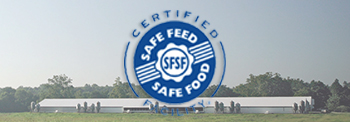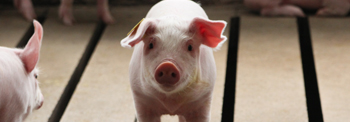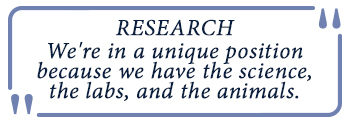Dr. David H. Baker
Dr. David Baker made indispensable contributions to the fields of animal and human nutrition over the course of his 40-year research career and wrote the book on the dietary requirements of many essential vitamins, minerals, and amino acids in animals. His discoveries are largely responsible for the development of the chemically defined diets and livestock feeds that have become the gold standard for the swine industry today.
A Lifelong Fascination
David was born on February 26th, 1939 in Waterman, IL, a small farming town of approximately 1,000 people, 60 miles west of Chicago. His fascination with nutrition began at an early age when his mother told him to eat carrots and liver because they were good for him. An insatiable curiosity led David to constantly wonder exactly why these things were good for him. It wasn’t until he took an advanced nutrition course at the University of Illinois that he got to find serious answers. After that, he couldn’t get enough. He received his B.S. in nutrition in 1961 and remained at the University of Illinois for his M.S. and PhD, the latter of which he received in 1965.
Post-Graduate Work
After receiving his PhD, David went to work at Eli Lilly, but found that his interests didn’t mesh well with the private sector. “I had a lot of ideas that I thought could benefit mankind or the animal industry, and I couldn’t pursue them because they were either not profitable or not patentable for the company,” he once explained. After just two years away, his alma mater welcomed him back with open arms as an associate professor in the Department of Animal Sciences 1967. However, he knew he had to excel beyond the normal expectations to overcome the stigma of being hired merely because he was a former student, and excel he did. He quickly rose through the ranks to become a full professor of nutrition in 1974.
David’s early work at the University of Illinois revolved around specifying dietary requirements for amino acids in pigs and, based on these requirements, developing a purified amino acid diet. He went on to publish additional diets for mice, rats, chickens, cats, and dogs as well as a complete chemical diet for pigs, which can produce growth rates comparable to standard corn–soybean diets. Because pigs and humans are metabolically very similar, many of David’s discoveries apply to human physiology as well. For example, he was the first to find an antidote for iodine toxicity, which could aid those responding to terrorist attacks or nuclear accidents that expose people to radiation.
An Enduring Legacy
Over the course of his 40-year research career, David published over 500 peer-reviewed research articles (133 on the topic of swine alone) as well as hundreds of popular articles and abstracts on comparative nutrition. He received dozens of awards throughout his lifetime, including a Distinguished Service Award from the US Department of Agriculture and the highest awards from both the American Society of Animal Science and the Poultry Science Association. David officially retired in 1999, but like most who worked hard for their success, found that idleness did not suit him and continued his research until his death in 2009, despite a lengthy battle with pancreatic cancer. He is survived by his wife, six children, sixteen grandchildren, two great-grandchildren, and the thirty-seven PhD students he mentored.



